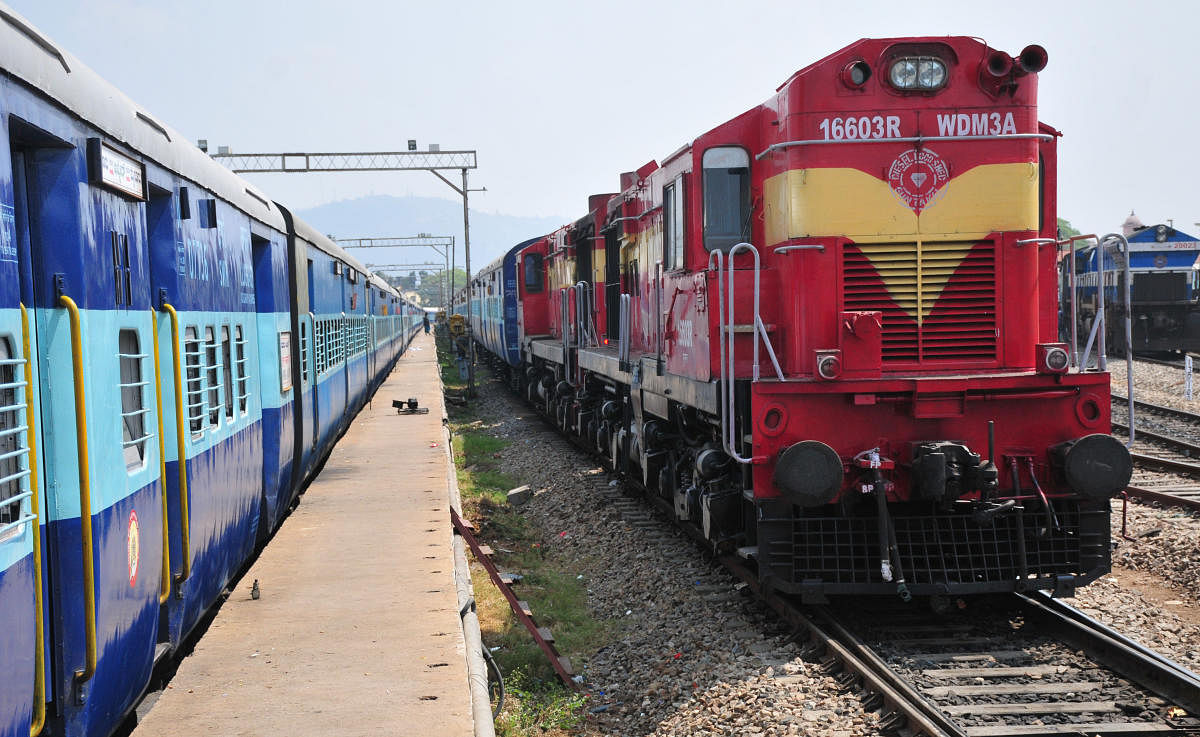Indian Railways is often called the lifeline of India. The fourth largest network, carrying over eight billion passengers a year, the second in capacity after China, is unfortunately in a bad state today. A plethora of accidents, 135 to be precise, greeted the NDA government as it came in, during 2014-15. Gradually, the number had fallen to 73 in 2017-18, as revealed in a reply by the Railway ministry to an RTI query in November 2018. But the decline happened for other reasons, rather than higher safety measures.
In another reply in December 2018, the ministry said that while 3,591 trains were cancelled during 2014-15, that number was up six times to 21,053 trains cancelled during 2017-18. These figures support what junior Railway Minister Rajen Gohain told Parliament – that while Railways carried 8.317 billion passengers in 2013-14, that number fell to 8.116 billion in 2016-17. Also, some 30% trains were running late in 2017-18, and that number is rising year after year.
Track renewal, electrification
Track renewal is the most vital part of rail safety. On this, an RTI reply in February 2019 said that only in FY2017-18 did Railways cross the track renewal figure that the UPA-2 had achieved in its first year in 2009-10.
Railways has a network of more than 1.17 lakh kilometres, some of it aged, some of it over-burdened. Only 4,000 km of track – 3.5% of the total length -- have been renewed. As for electrification, the first three years of the Modi government were wasted. In 2017-18, only 4.087 km were electrified.
The last vital point of rail development is laying new rail lines. Railways has a vast network of single track. In this category, laying of new lines fell from 953 km in 2016-17 to 409 km in 2017-18. An average of 1.75 km of track laid per day cannot be claimed as a major achievement of the Modi regime.
Railways financing
Over the years, Railways has been in need of massive funds for developing its core operational sectors. “Highest-ever funding of Rs 1.5 lakh crore for Railways – MoU signed with LIC. A big step forward to make Indian economy more robust: Suresh Prabhu”, announced the government on March 11, 2015. The next information we found dated October 27, 2015, was Railway ministry acknowledging receiving one instalment from LIC of
Rs 2,000 crore. No further information is available on any further instalments released by LIC till March 26, 2018.
As per another press release from the Railways ministry, “Ministry of Finance has approved government guarantee of Rs 5,000 crore in the current financial year for Indian Railway Finance Corporation (IRFC) bonds to be subscribed by LIC.” Even if we consider that this amount has been released to IRFC, still the net assistance till February 2019 is only Rs 7,000 crore. Where is the rest of the Rs 1.5 lakh crore promised in the March 2015 headline?
Foreign collaborations
Several foreign MoUs have been signed, but we are yet to see any impact on Railways, except one rake of Telgo coaches being test run in some sectors. During Modi’s visit to France in April 2015, a protocol was signed to seek cooperation for semi-high speed rail and station renovation.
There has been no further news on this. Again, during Modi’s trip to China in May 2015, an MoU was signed for specific cooperative initiatives within the financial year 2015-16. There was no action.
The latest one is a Memorandum of Cooperation (MoC), signed with Russia in October 2018. Other than development of Multi-Modal Terminals, higher education for Railways employees are also mentioned in the MoC.
The government release said that this MoC is to carry forward the activities taken up under MoU signed between the two countries in December 2015. Thus, from MoU to MoC, the Modi government took almost three years. There is no news of any execution on this.
Whither PPP?
On July 25, 2018, the MoS Railways told Parliament in a written reply, “Station development projects are complex in nature and required detailed techno-economic feasibility studies and statutory clearances from local bodies.” He said that 13 stations had been identified for re-development through Public-Private Partnership. They were Charbagh (Lucknow), Ernakulam, Gomti Nagar (Lucknow), Habibganj (Bhopal), Delhi Sarai, Rohilla, Jammu Tawi, Kota, Kozhikode, Madgaon, Nellore, Puducherry, Surat and Tirupati railway stations. “Offers through open bidding for private developers have already been done,” he noted.
Now, when we asked about this through RTI, the reply notes, “No station has been handed over to private parties till date. The Railway PSU, IRSDC, has been authorised to re-develop station by way of leasing for a fixed tenure”.
During the last seven years, Railways has floated and closed 24 contracts worth Rs 185.96 crore. Only two out of these 24 contracts are related to actual construction, the rest are merely about engagement of various consultants. Among those two contracts, re-development of Habibganj Railway Station (HRS) has been awarded to Bansal Construction Work Pvt Ltd, but the contractual amount has not been mentioned.
An architect was engaged for HRS and on the same day, the same architect was contracted to design the Chandigarh Railway Station, too. There is no news on the fate of either.
On November 1, 2018, the Railway Board issued a letter that it had decided to entrust all the stations to Indian Railways, except the ones already entrusted to IRSDC. Out of the list of 27 stations therein, 10 have been given to a consortium of Railway Land Development Authority (RLDA) and NBCC India Limited; Delhi Safdarjung to a consortium of NBCC India Ltd and IRCON; Bhubaneshwar is to be developed jointly by the Odisha government and East Coast Railway; and some 15 stations are to be developed by IRSDC.
In sum, not a single PPP has taken shape during the last two years. But headlines were manufactured at regular interval to showcase the achievements of the Modi government.
